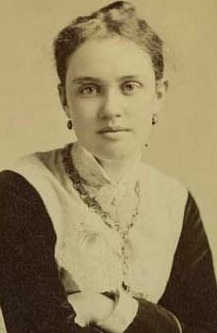On this date in 1864, Eva Ingersoll (later Ingersoll-Brown) was the first of two daughters born to freethought great Robert G. Ingersoll and Eva Wakefield Ingersoll. Both Eva and her sister Maud shared the same middle name: Robert. The girls were gently tutored, and when the family moved to Washington, D.C., from Illinois, they received lessons in music, art, German, French and Italian, piano and singing. Ingersoll was a pleasing soprano and, like her father, enjoyed public performance and toyed with a concert career.
As a young woman she was described in a sexist manner by the St. Louis Globe-Democrat as “a most decided beauty, being of that fresh, dewy-eyed and virginal type that the English painters depict.” (March 31, 1881.) In 1889 she married Walston Hill Brown, a well-to-do builder of railroads and an agnostic like her. His wedding gift: a spacious estate known as Castle Walston on the Hudson River at Dobbs Ferry, New York. It was a measure of the family devotion that before the marriage, all parties arranged that the newlyweds would live with the Ingersolls six months and the Ingersolls would live with the Browns for six months.
Ingersoll, a feminist and suffragist, became a prominent humanitarian in New York, working with the Advisory Board of the New York Peace Society, the Women’s Trade Union League, the National Child Labor Committee, the New York Society for the Prevention of Cruelty to Animals and the Society for the Advancement of the Colored People. She was president of the Child Welfare League. (D. 1928)


